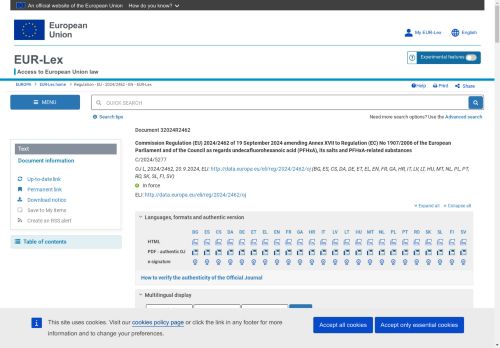
Voice of the Danube
Awareness is growing about the alarming side effects of er- and polyfluoroalkyl substances (‘PFAS'), so-called “forever chemicals”. So called because they do not break down in the natural environment. PFAS are a group of literally thousands of extremely long-lived chemicals that have become extremely popular for their physical properties and have long been used in a wide range of industrial processes and also in many consumer products, from teflon-sheeted pans to yoga pants and even food packaging.
PFAS bioaccumulate in fish and wildlife, which are then eaten by humans. Residues are widely present in rain and drinking water. PFAS compounds are often unwittingly ingested and can even be absorbed through the skin. Exposure to PFAS, has been linked to decreased immunity, decreased fertility, developmental issues in children, obesity several types of cancers.
In view of the unacceptable risk to human health and the environment, the EU is working to tackle PFAS pollution. As indicated in the Chemicals Strategy for Sustainability, the Commission is committed to take a comprehensive set of actions to address the use and contamination with PFAS, under REACH, the EU's chemicals legislation, and under other environmental and human health specific legislations.
On 19 September this year, the EU Commission has adopted new measures under the REACH Regulation, the EU chemicals legislation, restricting the use of of an important subgroup of PFAS, namely undecafluorohexanoic acid (‘PFHxA') and related substances.
The PFHxA restriction focuses on uses where the risk is not adequately controlled, alternatives are available, and socio-economic costs will be limited in comparison to the human health and environmental benefits.
The restriction will ban the sale and use of PFHxA in consumer textiles, such as rain jackets; food packaging, consumer mixtures such as waterproofing sprays, skin care products, and in firefighting foam applications for training and testing purposes.
Get the official Regulation from EU Commission Regulation under the link below!




